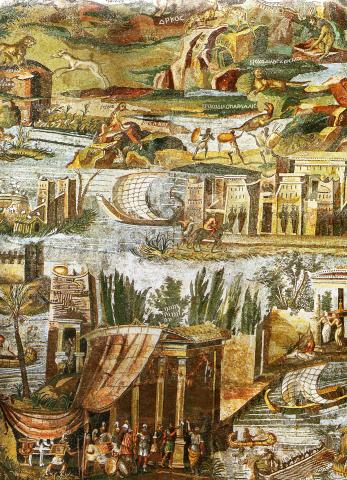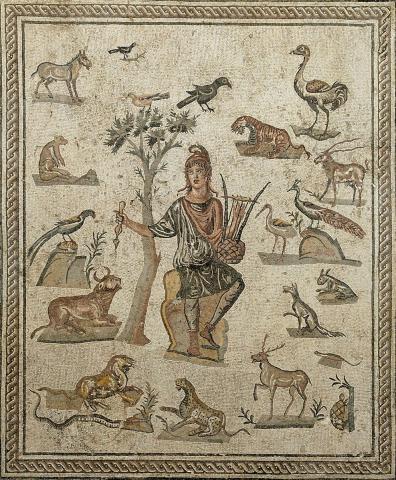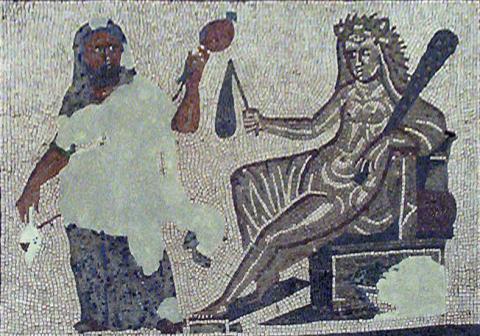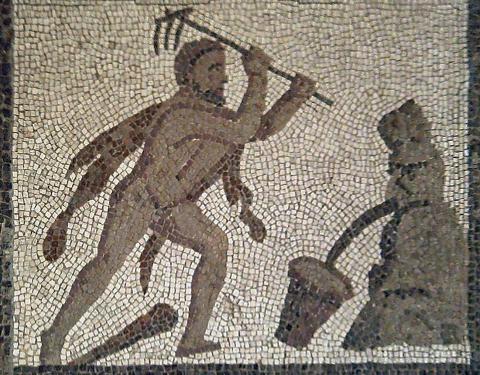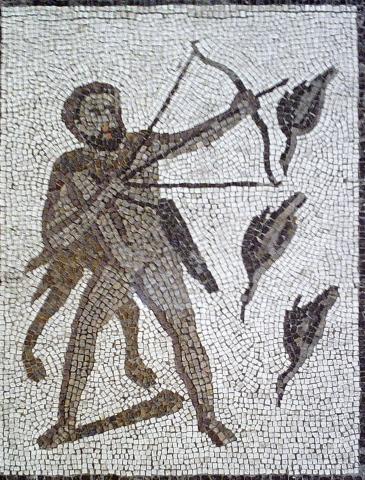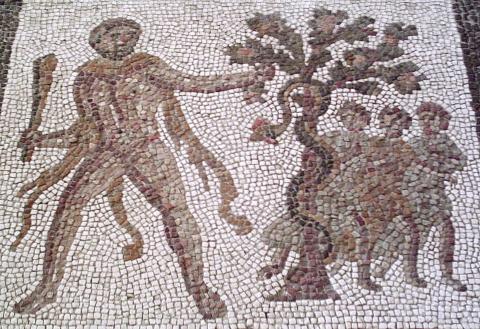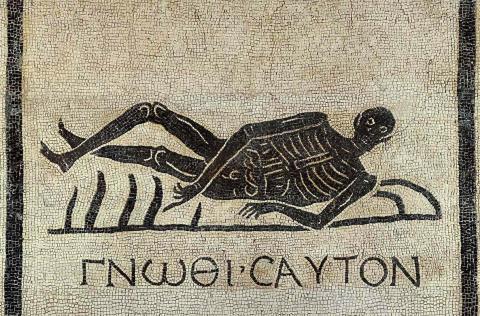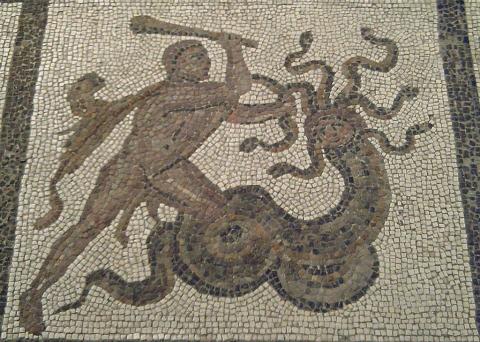Nile Mosaic of Palestrina
Annotations
The Palestrina Mosaic or Nile mosaic of Palestrina is a late Hellenistic floor mosaic depicting the Nile in its passage from the Blue Nile to the Mediterranean. The mosaic was part of a Classical sanctuary-grotto in Palestrina, a town east of Ancient Rome, in central Italy. It has a width of 5.85 metres and a height of 4.31 metres and provides a glimpse into the Roman fascination with ancient Egyptian exoticism in the 1st century BC, both as an early manifestation of the role of Egypt in the Roman imagination and an example of the genre of "Nilotic landscape", with a long iconographic history in Egypt and the Aegean.
The mosaic, with an arch-headed framing that identifies its original location as flooring an apse in a grotto, features detailed depictions of Ptolemaic Greeks, Aethiopians in hunting scenes, and various animals of the Nile river. It is the earliest Roman depiction of Nilotic scenes, of which several more were uncovered at Pompeii. A consensus on the dating of the work is slowly emerging. Paul G. P. Meyboom suggests a date shortly before the reign of Sulla (ca. 100 BC) and treats the mosaic as an early evidence for the spread of Egyptian cults in Italy, where Isis was syncretised with Fortuna. He believes Nilotic scenes were introduced in Rome by Demetrius the Topographer, a Greek artist from Ptolemaic Egypt active ca. 165 BC. Claire Préaux emphasises the "escapist" nature of the fantastic scenery. (Wikipedia)

